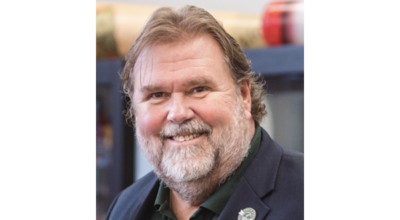Not a No. 2 Ticonderoga to be found
Published 1:30 pm Thursday, February 26, 2015
Now that I have found so many pencils at my house, my favorite pencil, a Ticonderoga No. 2 is not among them.
You must remember a Ticonderoga pencil, it is the yellow and green pencil with an orange eraser on the top. Each year in elementary school we were given a new pencil to start the year.
Once it was sharpened it made the best marks on the paper. It was always clear, easy to read and made writing easy. Not only that, it was easy to sharpen.
In 1827, Joseph Dixon began a business in Salem, Massachusetts. He discovered that graphite was a great stove polish, an additive in lubricants, and useful for pencils. As a manufacturer and entrepreneur, Dixon produced the first pencil made in the United States and was responsible for the development of the graphite industry in the United States.
He was also instrumental in starting the United States’ steel industry. At the time of Joseph Dixon’s death in 1869, the Joseph Dixon Crucible Company was the largest manufacturer of graphite products in the world. As popularity for the pencil grew and the demand increased, Dixon invented a machine that was able to produce 132 pencils per minute.
During the 1860s, people still wrote with quill pens and ink, even though Joseph Dixon introduced the first graphite pencil in 1829. It wasn’t until the Civil War that the demand for a dry, clean, portable writing instrument became popular and led to the mass production of pencils. Joseph Dixon was the first to develop pencil automation. In 1872, the company was making 86,000 pencils a day.
By 1870, The Joseph Dixon Crucible Company was the world’s largest dealer and consumer of graphite and had garnered worldwide recognition for its superior product quality. By the end of the 19th Century over 240,000 pencils were used each day in the U.S. The Joseph Dixon Crucible Company continued to prosper throughout the 20th Century by growing through a series of mergers and acquisitions.
In 1982, the Joseph Dixon Crucible Company merged with the Bryn Mawr Corporation, and together, these companies formed the Dixon Ticonderoga Company, named after Joseph Dixon and its oldest brand-name pencil. The Ticonderoga pencil is no longer manufactured in the United States but can purchased at most office supply stores.
Now to the eraser.
Every pencil or most pencils have an eraser on the top. It is an orange rubber knob on the top. Here are some facts about erasers I found on the Internet.
Fact No. 1:
Pencil manufacturers make erasers, too, which makes sense since we tend to think that it’s a done deal – an eraser is a regular component of the everyday pencil.
Fact No. 2:
Pencils with erasers are an American phenomenon. The first patent for attaching an eraser to a pencil was issued in 1858 to Hymen Lipman of Philadelphia. Even to this day, most pencils sold in Europe are eraser-less!
Fact No. 3:
An eraser by any other name? Originally, what we now call an eraser was referred to as a “rubber” because the tree resin it was made of “rubbed out” pencil marks.
Fact No. 4:
An eraser isn’t called eraser by eraser manufacturers, either. Their name for the little erasers on pencil ends: “plugs!”
Fact No. 5:
More and more of today’s erasers are made from something other than rubber! While some of the “pink” erasers you find on pencils are made from synthetic rubber blended with pumice (a grit that enhances its ability to erase), an increasing number of erasers are made from vinyl.
Since I often make mistakes, I appreciate the eraser and wish that life came with an eraser. A really big one!
*An added note, we are now up to 117 pencils in our house and still finding more!
Jo-Ann Boepple works at the Edwardsburg Area History Museum





